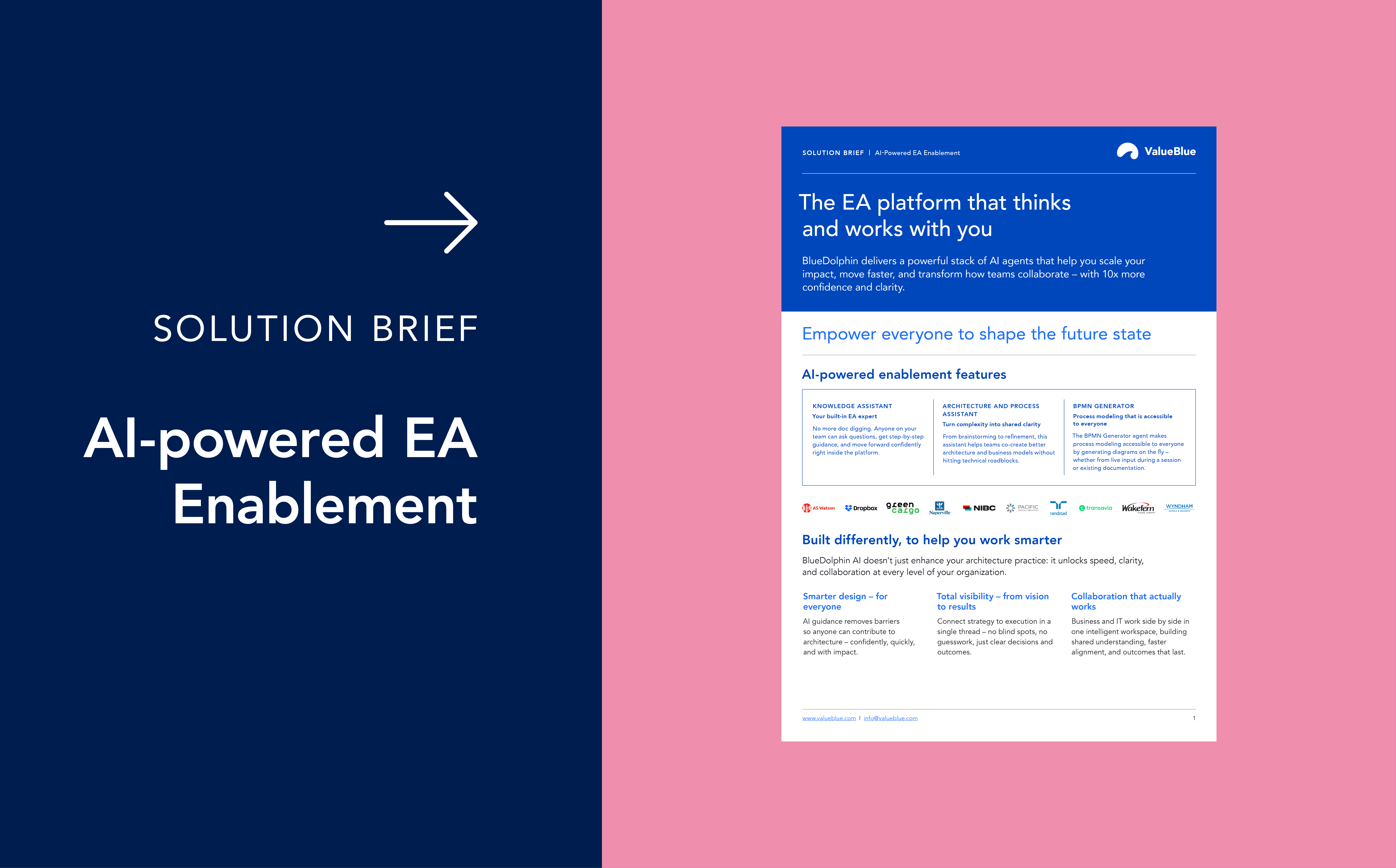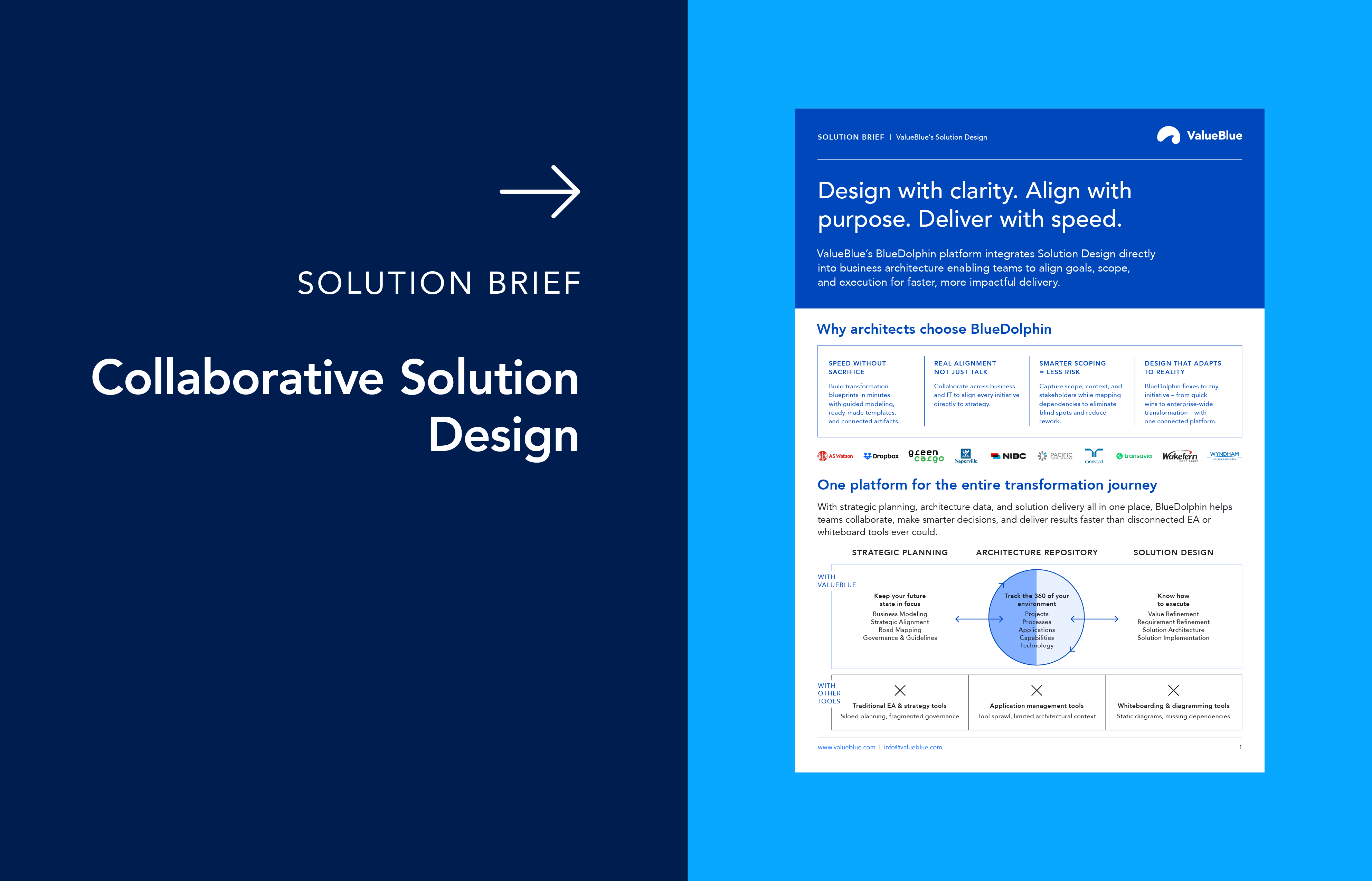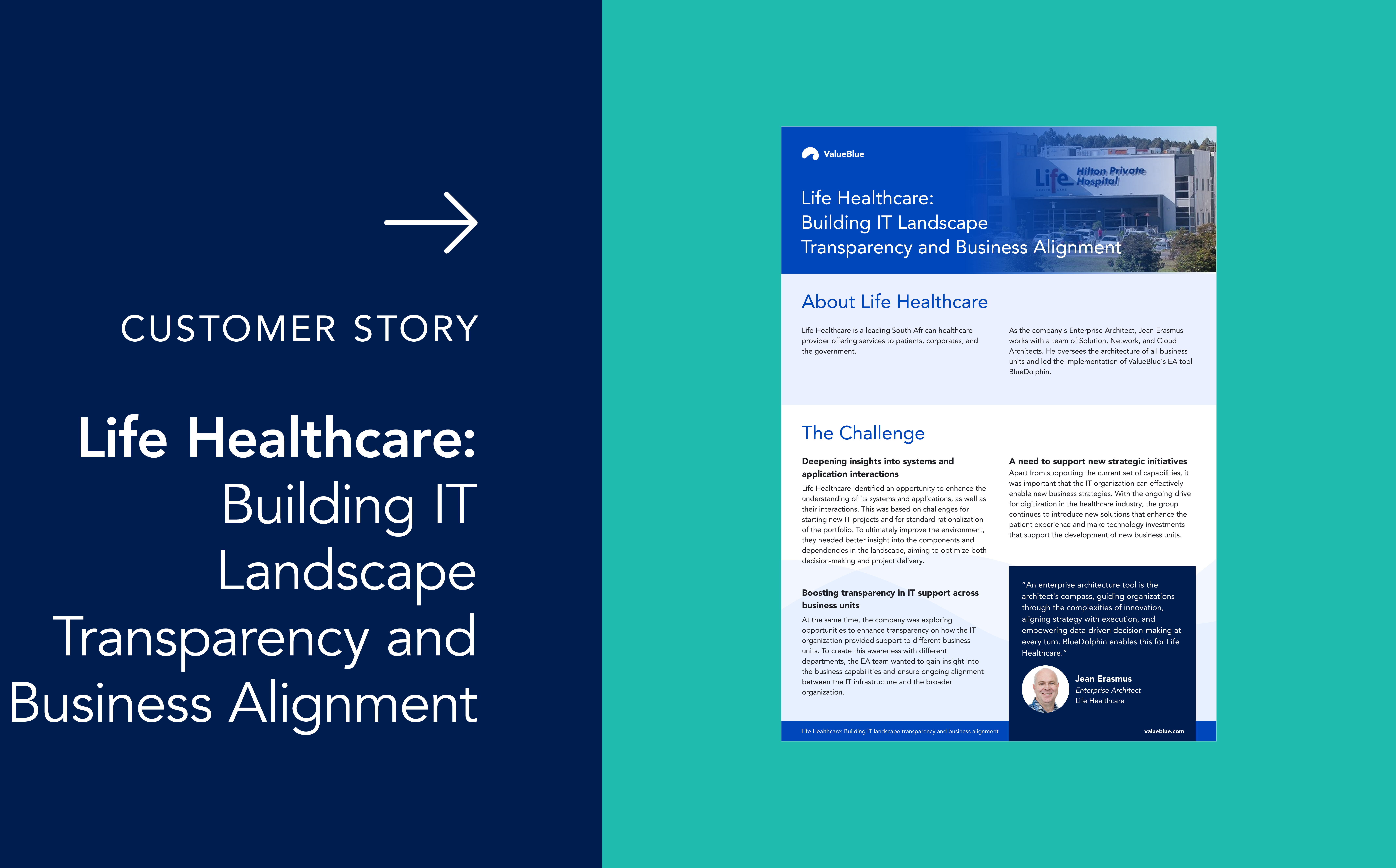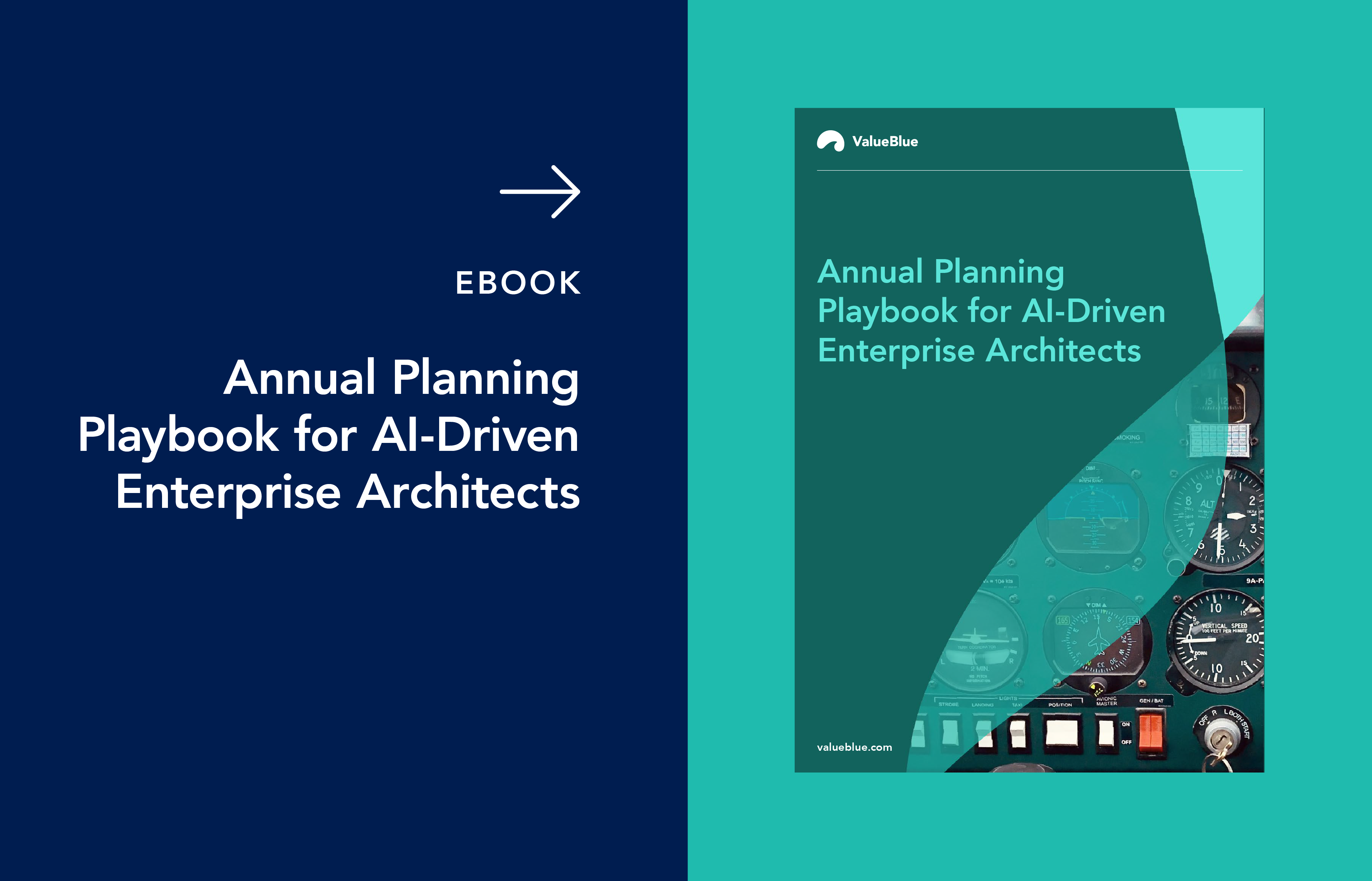Strategic vs Tactical Planning in Enterprise Architecture
Companies are constantly transforming to adapt and innovate. From replacing legacy systems to introducing groundbreaking products to market, these transformations range from gradual optimizations to fundamental shifts. Naturally, how you plan and execute them can vary significantly based on their scope and intended impact.
Enterprise Architecture (EA) provides organizations with a comprehensive view of their current landscape and future direction. It offers context for planning broad strategic changes and more focused, tactical adjustments. Understanding both approaches - and how they work together - is essential for long-term success.
This article compares strategic and tactical approaches to transformation planning, reviewing their characteristics, differences, and key components.
What is strategic planning?
Organizations typically employ strategic planning to facilitate complex transformations that achieve high-level business objectives and strategies. Truly strategic initiatives often require the creation of a revised, future-state architecture through significant solution design cycles.
Characteristics of strategic planning
- Focused on the future (state)
Strategic planning looks beyond the current state of the organization, concentrating on defining a future-state architecture that aligns with the long-term vision and goals. - Serves business objectives
The primary goal of strategic planning is to align the Enterprise Architecture with broader business objectives. The practice of strategic planning ensures that architectural decisions directly contribute to the realization of the business strategy. - Drives innovation forward
Strategic planning should foster organizational innovation by envisioning new and transformative solutions. It encourages organizations to explore cutting-edge technologies and methodologies that can drive significant change in their market. - Examines the entire ecosystem
Strategic planning demands a holistic approach, considering the organization's entire ecosystem. It challenges you to look beyond individual projects or departments, resulting in a cohesive and integrated architecture.
Strategic planning with Enterprise Architecture, step-by-step
Step 1: Analyzing drivers for change
At the initial phase of planning strategic transformations, it's essential to understand the unique drivers that instigate the change. These should provide context for how your products, services, or customer journey might require transformation. Given the diversity of external drivers, including market and industry dynamics, employing a range of analytical approaches is typically necessary.
If you're a BlueDolphin user, you can check out the various templates designed to capture and assess these insights.
An example of analyzing drivers for change using BlueDolphin. Here, we’re using the Customer Journey template to analyze the processes and apps integral to servicing customers online.
Step 2: Capturing business goals
Once you've identified the drivers behind the transformation, you can focus on capturing the new business goals and objectives. Enterprise Architecture should play a key role in helping C-level executives to define these. Here are three ways in which EA teams contribute to this process:
- Communicate insights
Share insights from your current state analysis with the executive team to identify gaps and opportunities for improvement. - Collaborate on goal definition
Work collaboratively to define short-term or long-term goals based on your business and capability model. - Use an Enterprise Architecture tool
Leverage EA tools such as BlueDolphin to facilitate a structured approach to capturing business goals and planning the transformation.
-1-1.png?width=300&height=424&name=eBook_Guide%20to%20Strategic%20Planning_7%20pages%20(1)-1-1.png)
Strategic Planning with Enterprise Architecture
Value delivered from transformation projects often falls way too short of expectations - research shows only 31% of expected revenue increases and 25% of cost savings are achieved. Increase the business value of your transformations with strategic planning for EA.
What is tactical planning?
Tactical planning within the context of Enterprise Architecture entails adopting a focused and practical approach to optimizing existing systems, processes, and technology landscapes.
Unlike strategic planning, tactical planning addresses the immediate needs of the organization. It's a dynamic process that should enhance your organization's efficiency, help resolve its challenges, and deliver quick wins. What tactical planning is unlikely to do is significantly move your strategic needle.
Want to see how this works in practice? Book a short BlueDolphin demo.
Explore how you can design and align your transformation initiatives more effectively - from strategy to execution.
Characteristics of tactical planning
- Focuses on the here and now
Tactical planning centers on short-term objectives that align with the organization's current priorities. It doesn't require focus on time frames such as three-, five-, or ten-year roadmaps. Instead, it involves making incremental improvements to the existing architecture to address immediate pain points. - Lifts operational efficiency
The primary goal of tactical planning is to enhance operational efficiency. This could involve streamlining processes, improving system performance, or resolving bottlenecks within the current process architecture. - Quick wins, rapid gains
Tactical planning often involves identifying opportunities for quick wins. These are tangible, immediate improvements that provide visible benefits to the organization, fostering a sense of progress and accomplishment. - Alignment between business and IT units
Successful tactical planning requires close collaboration between IT teams and business units. It's essential to gather insights from both sides to identify areas for improvement and align tactical objectives with business needs.
Tactical planning with Enterprise Architecture, step-by-step
While strategic planning sets the stage for large-scale transformation, tactical planning is equally crucial for optimizing existing systems and ensuring operational efficiency. As such, it intersects with the day-to-day tasks of many enterprise architects.
Step 1: Analyzing the current state architecture
Before diving into tactical planning, it is essential to analyze the current state of the architecture thoroughly. This involves assessing the strengths and weaknesses of your capabilities, including the applications, processes, data, and infrastructure that enable them.
EA tools like BlueDolphin can help you visualize the current state and gain a clear overview of the existing landscape. This step sets the foundation for informed decision-making in any subsequent tactical planning.
Explore our how-to guide for analyzing your current state architecture.
Step 2: Identifying short-term objectives
Once you have gathered sufficient insights, the next step is identifying short-term objectives. These should complement immediate business priorities and enhance specific aspects of the current architecture. Whether through upgrading legacy applications, addressing process bottlenecks, or implementing new systems, you should make targeted adjustments that yield tangible and immediate results.
Balancing Act: Integrating Strategic and Tactical Planning
Though they address different needs, strategic and tactical planning are most effective when combined. With the right balance, they help companies pursue long-term goals without losing sight of day-to-day priorities.
Striking the right balance
- Long-term vision vs. immediate needs
Strategic planning focuses on the long-term vision, aligning the architecture with overarching goals. Tactical planning addresses immediate needs, ensuring the organization remains responsive to current challenges. - Innovation vs. efficiency
Strategic planning drives innovation by envisioning future-state architectures. Tactical planning enhances efficiency by addressing immediate pain points and optimizing existing processes. - Collaboration across teams
Both planning approaches require collaboration across IT, business units, and executive teams. Enterprise Architecture teams, as ever, play a central role in facilitating communication and ensuring alignment between strategic and tactical initiatives.
Conclusion: Orchestrating success
Strategic and tactical planning each serve a vital purpose. By maintaining a close grip on the current state, organizations can remain adaptable and make tactical improvements. They can flag risks and streamline inefficiencies in processes, applications, data, or technology infrastructures.
On the other hand, by aligning these insights with strategic objectives, they can steer toward future-state innovation. They can consolidate high-level goals and objectives, create and adjust business model canvases, and design truly innovative solutions.
Want more strategic planning for Enterprise Architecture? Don’t miss our eBook: A Guide to Strategic Planning with Enterprise Architecture.
Book a demo
Want to discover how our tool can further enhance your Enterprise Architecture? Fill in the form!
Have questions about Enterprise Architecture best practices?
Our experts are happy to help.




